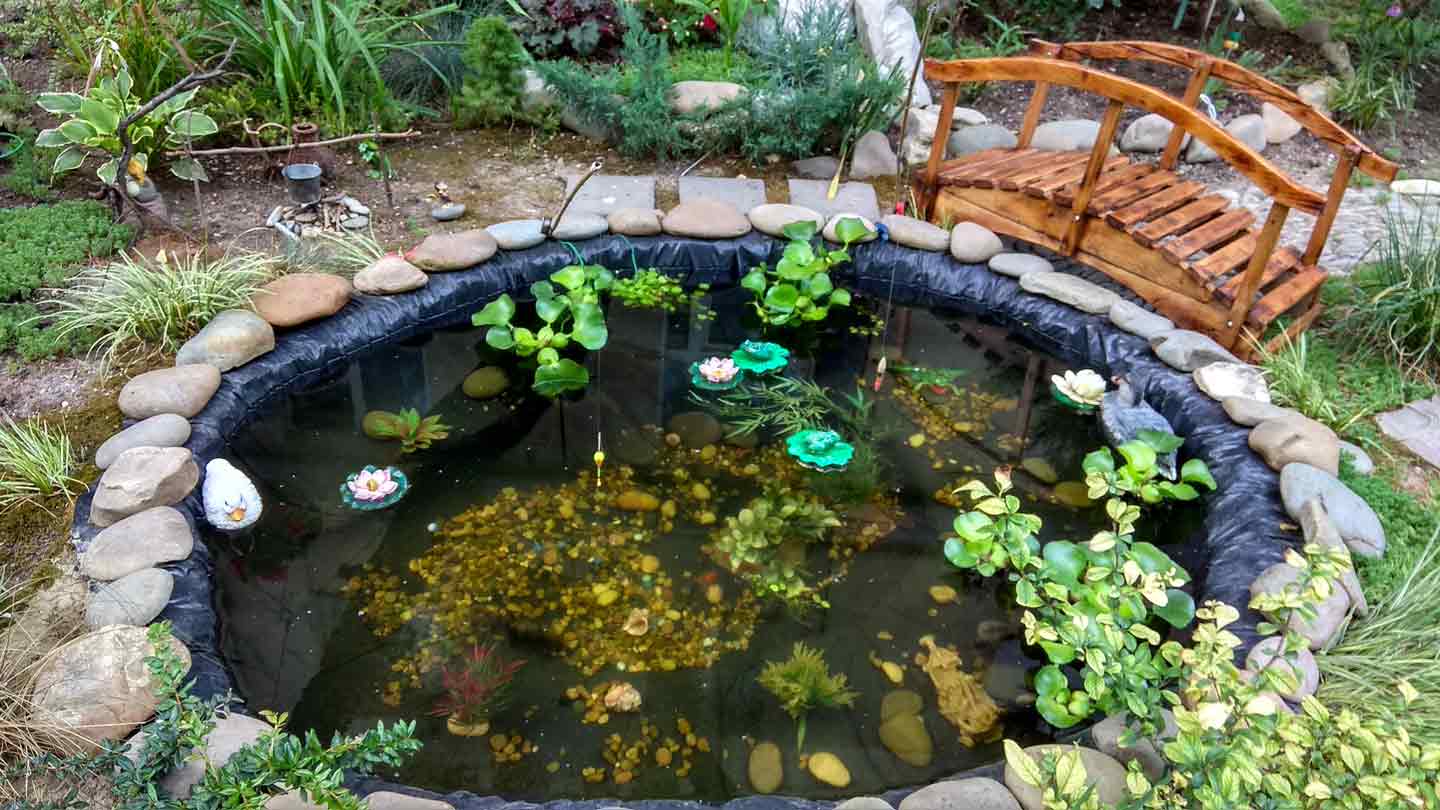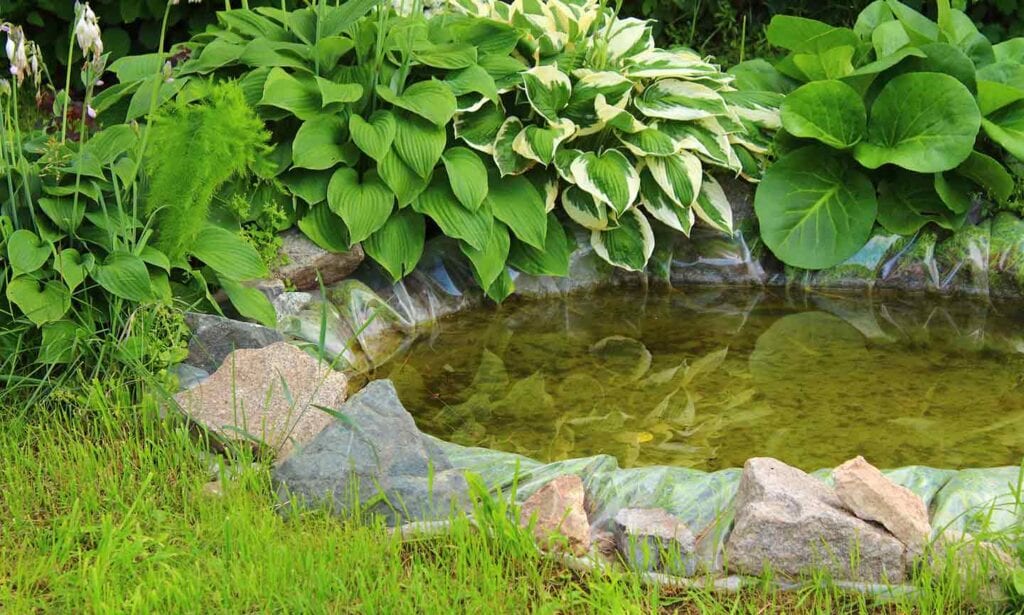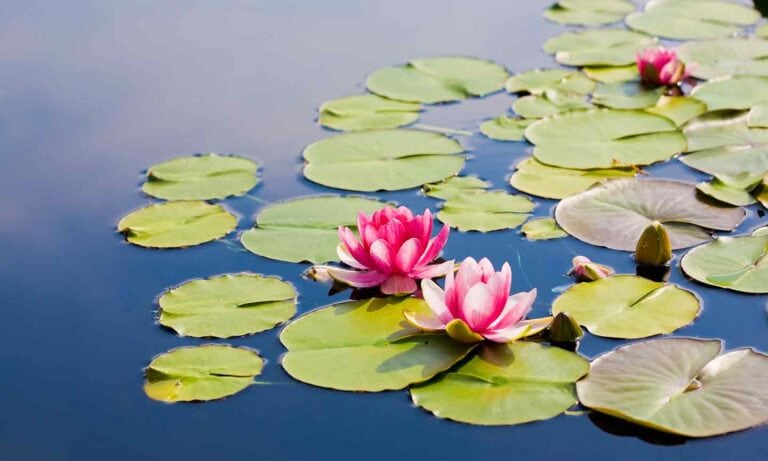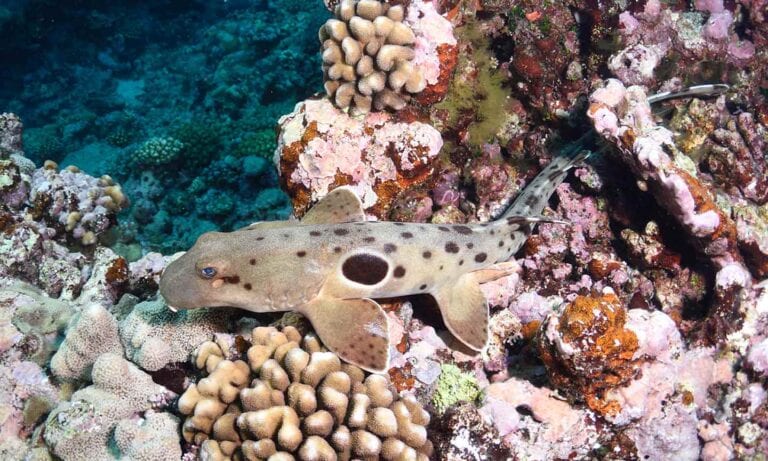Necessary Equipment
Building a small water garden or mini pond is generally something you can do yourself, but it’s wise to consult an expert before building a large pond. Here are the materials you’ll need for a DIY pond build.
- Marking paint, garden hose, or heavy rope
- Shovel
- Pond skimmer
- Pond filtration system and pump
- Pond underlayment
- Pond liner
- Smooth gravel
- Assorted rocks
- Pond lighting
- Landscaping plants
- Pond plants
- Pond water conditioner
Choosing a Pond Liner
If you’re using a pond liner, whether you’re building a small backyard pond or constructing a large pond for ducks and other wildlife, durability is a must. The type of liner you choose may depend on the size, depth, and purpose of your pond.
- Reinforced polyethylene (RPE) and ethylene propylene diene monomer (EPDM) are popular pond liner materials. Both come in long rolls or folded sheets.
- Reinforced polypropylene (RPP) geomembrane is an industrial-strength, flexible pond liner material sometimes used in very large ponds and man-made lakes.
- Polyvinyl chloride (PVC) is a lower-cost alternative to RPE and EPDM, but it may not be appropriate for cold climates, or safe for wildlife ponds or fish. PVC pond liners come in flexible sheets and rigid, preformed shapes.
- Preformed pond liners are puncture-resistant and easy to install—especially for a small pond. The downside is they lack UV stability, and are prone to cracks and leaks over time.
Ed Beaulieu (The Pond Professor), director of contractor development and field research for Aquascape®, Inc. in St. Charles, Illinois, recommends a fish-safe 45 mil EPDM pond liner for small residential ponds and water features. (The “45 mil” refers to the thickness of the liner.) “For larger ponds and lakes,” he says, “reinforced polypropylene is a great option, which can be custom-made for unique applications.”
In addition to your pond liner, installing a geotextile underlayment is recommended for all ponds. It’s particularly important to pair with EPDM, which is made of rubber, and may be more at risk of puncture from rocks or roots in the ground than other materials. Both EPDM and RPE liners typically offer some UV resistance to slow degradation from sun exposure.
If you want your pond to last, invest in high-quality materials and install the liner properly. “A quality pond liner will hold water for many years,” says Jennifer Zuri, marketing communications manager for Aquascape®. She recommends choosing a product that comes with at least a 20-year guarantee.
How To Install a Pond Liner: Step by Step

1Mark Out and Excavate the Pond Area
Use a garden hose or heavy rope to map out the shape of your pond. If using a preformed pond liner, place it upside down in the desired location. Use marking paint to outline the pond, then dig it out to the desired depth.
2Level the Bottom
Remove all loose dirt and sharp stones from the excavated area, then level the bottom. If your pond is multi-tiered, the base of each tier should be leveled with the sides, sloping gently in toward the center.
3Install the Pond Underlayment
Drape the underlayment over the excavated area. If you need more than one sheet to cover the width of the pond, overlap the layers by at least 3 inches. Gently press the underlayment into the bottom and sides of the pond.
4Unfold and Install the Pond Liner
Unfold and drape the liner loosely over the pond area, being careful not to disturb the underlayment. The weight of the material should help it start settling into place. If using a preformed liner, place it in the dug-out area over the underlayment (if using).
5Anchor the Liner
Place large stones around the border of the pond at regular intervals to anchor the liner and underlayment in place. Fill the bottom of the pond with about 2 inches of smooth gravel—it should be about 1 inch in diameter.
6Install the Pond Filter and Skimmer
If you’re using a pond skimmer or waterfall filter, you may need to install it before filling the pond. Follow the manufacturer’s instructions to do so.
7Fill the Pond Slowly
Using a garden hose, fill the pond slowly. Gently tug the liner into place as needed, letting the water mold it to the contours of the pond. Add the appropriate dosage of the desired water treatments, including a pond water conditioner.
8Let the Pond Settle
Once the pond is filled, let it rest for at least 24 hours to give the liner time to completely settle into place.
9Trim the Excess Underlayment and Liner
Cut away the excess underlayment and pond liner, leaving 6–18 inches of material all the way around the pond.
10Finish the Pond Edging
Add more stones to create a border all the way around the pond; the excess liner should be completely covered. Finish your pond design with your desired decorations, including any lighting and aquatic plants.
FAQs About Lining a Pond
Q:Do I really need a pond liner?
A:Maybe not—if your soil has a high enough percentage of clay to prevent leakage. However, sediment could still become an issue. In rocky or sandy soil, pond liners help keep the pond from shifting or collapsing. “The pond liner will also assist with water quality,” says Beaulieu, “because it will act as a barrier between the water and subsoil.”
Q:Why are pond liners black?
A:The black color helps create a natural look, and hides debris and algae growth on the bottom of the pond. It also warms the water as it absorbs sunlight. In a koi pond, a black background makes the colorful fish stand out.
Q:What is the most durable material for a pond liner?
A:Pond experts often recommend RPE and EPDM liners. Both are flexible, durable, and fish-safe. Preformed pond liners are puncture-resistant, but may be prone to cracks and leaks. They also may not come with a warranty.
Q:How do I choose the right size liner for my pond?
A:“Once the design is complete,” says Beaulieu, “measure the maximum length and width of the pond, and multiply by the maximum depth.” Tim Wood, an Aquascape® contractor and founder of Aquatic Edge Pond & Landscape Solutions in Pittsburgh, recommends purchasing several extra feet to accommodate at least 6 inches of excess around the border.
More About Ponds
Share:












